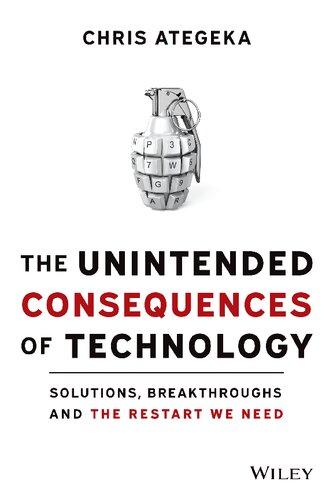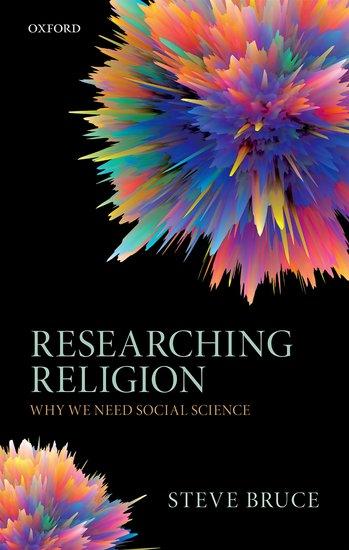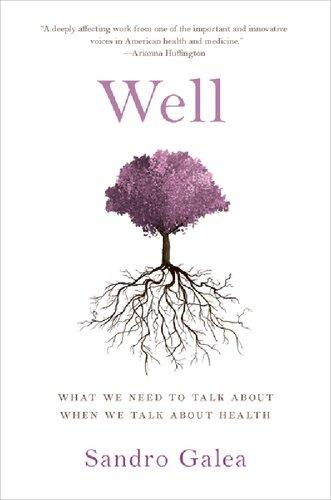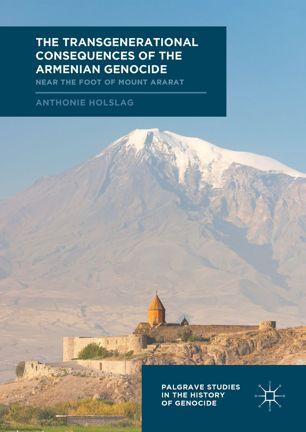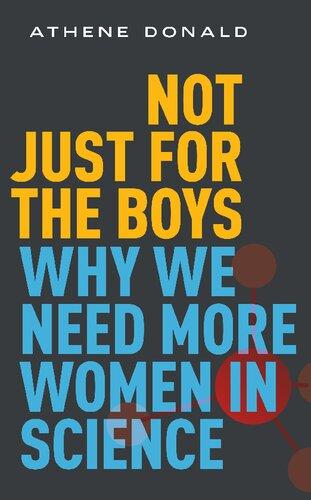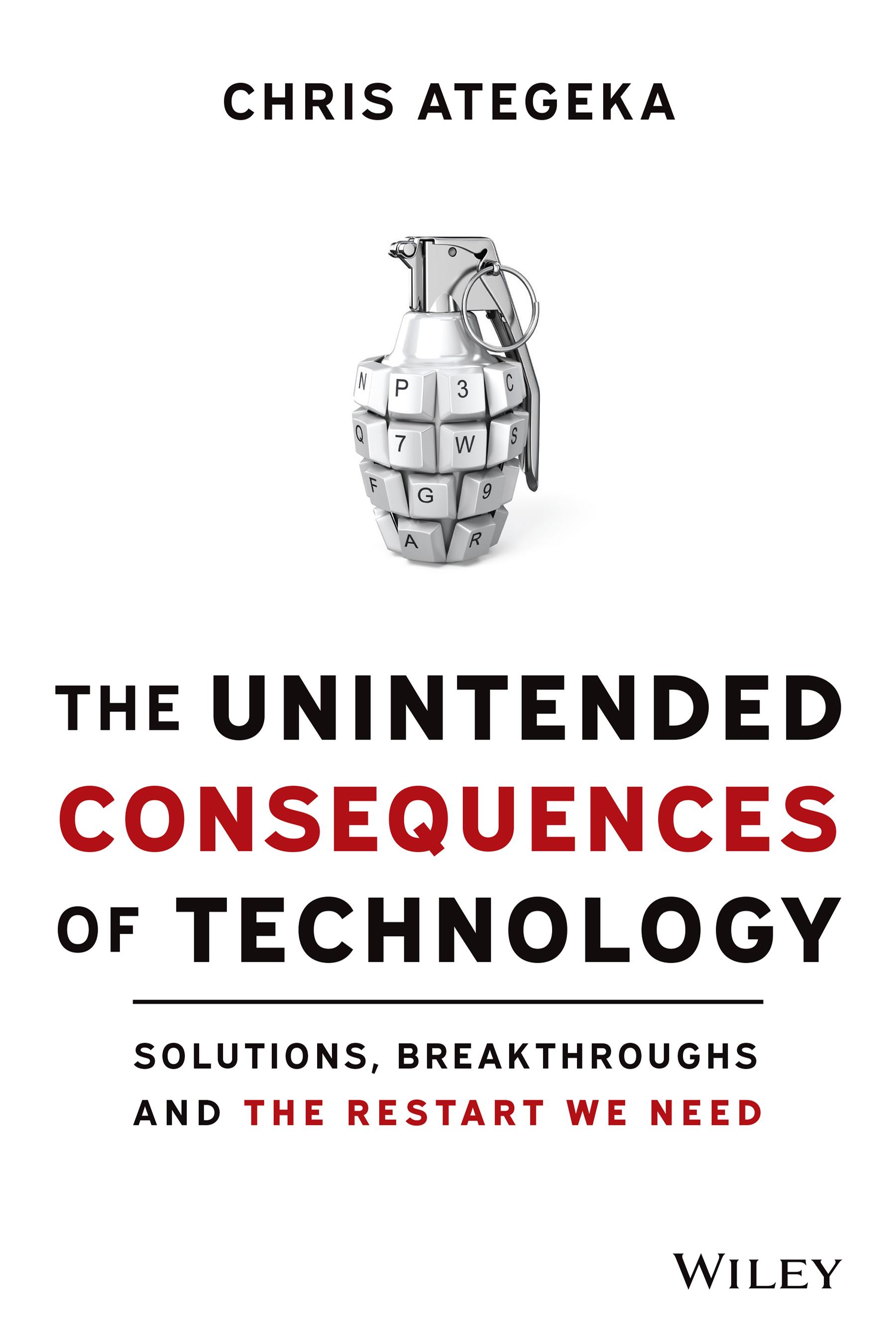The Unintended Consequences Of Technology: Solutions, Breakthroughs, And The Restart We Need 1st Edition
Chris Ategeka
Visit to download the full and correct content document: https://ebookmass.com/product/the-unintended-consequences-of-technology-solution s-breakthroughs-and-the-restart-we-need-1st-edition-chris-ategeka/
More products digital (pdf, epub, mobi) instant download maybe you interests ...
The Evil Within: Why We Need Moral Philosophy 1st Edition Diane Jeske
https://ebookmass.com/product/the-evil-within-why-we-need-moralphilosophy-1st-edition-diane-jeske/
Why We Need Religion Stephen T. Asma
https://ebookmass.com/product/why-we-need-religion-stephen-tasma/
The Ecological and Societal Consequences of Biodiversity Loss 1st Edition Forest Isbell
https://ebookmass.com/product/the-ecological-and-societalconsequences-of-biodiversity-loss-1st-edition-forest-isbell-2/
Researching Religion: Why We Need Social Science Steve Bruce
https://ebookmass.com/product/researching-religion-why-we-needsocial-science-steve-bruce/
Well: What We Need to Talk About When We Talk About Health 1st Edition Sandro Galea
https://ebookmass.com/product/well-what-we-need-to-talk-aboutwhen-we-talk-about-health-1st-edition-sandro-galea/
The Ecological and Societal Consequences of Biodiversity Loss 1st Edition Forest Isbell
https://ebookmass.com/product/the-ecological-and-societalconsequences-of-biodiversity-loss-1st-edition-forest-isbell/
The Transgenerational Consequences of the Armenian Genocide 1st ed. Edition Anthonie Holslag
https://ebookmass.com/product/the-transgenerational-consequencesof-the-armenian-genocide-1st-ed-edition-anthonie-holslag/
A Jurisprudence Of The Body 1st Edition Edition Chris Dietz
https://ebookmass.com/product/a-jurisprudence-of-the-body-1stedition-edition-chris-dietz/
Not Just for the Boys: Why We Need More Women in Science Athene Donald
https://ebookmass.com/product/not-just-for-the-boys-why-we-needmore-women-in-science-athene-donald/
Copyright © 2022 by Chris Ategeka. All rights reserved.
Published by John Wiley & Sons, Inc., Hoboken, New Jersey.
Published simultaneously in Canada.
No part of this publication may be reproduced, stored in a retrieval system, or transmitted in any form or by any means, electronic, mechanical, photocopying, recording, scanning, or otherwise, except as permitted under Section 107 or 108 of the 1976 United States Copyright Act, without either the prior written permission of the Publisher, or authorization through payment of the appropriate per-copy fee to the Copyright Clearance Center, Inc., 222 Rosewood Drive, Danvers, MA 01923, (978) 750-8400, fax (978) 646-8600, or on the Web at www.copyright.com. Requests to the Publisher for permission should be addressed to the Permissions Department, John Wiley & Sons, Inc., 111 River Street, Hoboken, NJ 07030, (201) 748-6011, fax (201) 748-6008, or online at http://www.wiley.com/go/permissions.
Limit of Liability/Disclaimer of Warranty: While the publisher and author have used their best efforts in preparing this book, they make no representations or warranties with respect to the accuracy or completeness of the contents of this book and specifically disclaim any implied warranties of merchantability or fitness for a particular purpose. No warranty may be created or extended by sales representatives or written sales materials. The advice and strategies contained herein may not be suitable for your situation. You should consult with a professional where appropriate. Neither the publisher nor author shall be liable for any loss of profit or any other commercial damages, including but not limited to special, incidental, consequential, or other damages.
For general information on our other products and services or for technical support, please contact our Customer Care Department within the United States at (800) 762-2974, outside the United States at (317) 572-3993 or fax (317) 572-4002.
Wiley publishes in a variety of print and electronic formats and by print-on-demand. Some material included with standard print versions of this book may not be included in e-books or in print-on-demand. If this book refers to media such as a CD or DVD that is not included in the version you purchased, you may download this material at http://booksupport.wiley.com. For more information about Wiley products, visit www.wiley.com.
Library of Congress Cataloging-in-Publication Data
Names: Ategeka, Chris, author.
Title: The unintended consequences of technology : solutions, breakthroughs, and the restart we need / Chris Ategeka.
Description: Hoboken, New Jersey : Wiley, [2021] | Includes index.
Identifiers: LCCN 2021027157 (print) | LCCN 2021027158 (ebook) | ISBN 9781119817598 (hardback) | ISBN 9781119817581 (adobe pdf) | ISBN 9781119817604 (epub)
Subjects: LCSH: Technology—Sociological aspects. | Technology—Social aspects.
Classification: LCC HM846 .A79 2021 (print) | LCC HM846 (ebook) | DDC 303.48/3—dc23
LC record available at https://lccn.loc.gov/2021027157
LC ebook record available at https://lccn.loc.gov/2021027158
Cover Design: Wiley
Cover Image: © Sashkinw/iStock/Getty Images
Dedicated to my parents, my siblings, my partner, Caroline, and my son, Matt.
Thanks for making it all worthwhile.
Chapter 10
IntroductIon
“We cannot solve our problems with the same thinking we used when we created them.”
Albert Einstein
umanity is at a crossroads. The explosion of technology and its exponential advancements are reshaping what it means to be human. As technology continues to expand, its incredible imprint on our lives continues to deepen. Our algorithmic lifestyles have completely taken over our lives. Today technologies make decisions about what we buy, the news we read, who we vote for, the jobs we get, the people we meet, and the ads we see.
Along with the benefits and victories provided by new technologies are many consequences that are alarmingly detrimental to society and to our planet.
When you take a closer look at any technology, you will find that it’s a double-edged sword. If it’s used correctly, it can and has made our lives easier, more efficient, and better. However, that same technology, in the wrong hands or used incorrectly, can do serious damage to humanity.
Progress always comes at a cost. Paper fundamentally changed the way information was stored and distributed, but its production, to this day, contributes heavily to deforestation. Technology, just like medicine, is not free from side effects. For example, consider that:
• A technology promising a cancer-free world can cause cancer.
• A technology promising us democratic values such as freedom of speech and agency can also threaten democracies.
• In a world of infinite digital connectivity, millions of people still feel alone. Isolation and depression are public health crises.
• Digital technology is aiding our culture to reject reason yet heavily reward outrage, untruths, and myths.
• Technology has hastened humans’ tendency to run our resources into the ground, metaphorically and literally, instead of aspiring to regeneration and sustainability.
This should come as no surprise, because hindsight is always 20/20. Rarely at the time of invention are creators the best judge of how their system will be used, nor do they truly know what good or harm will come of it.
Industrialization increased our standard of living, but it also led to a lot of pollution. In a similar way, technology has exacerbated the effects of climate change. The planet is in full-on emergency mode. Emissions are on the raise. Earth is turning into desert. The oceans are heating up. Species are going extinct. The Amazon is burning at an alarming rate. Ecosystems are crashing. The ice is melting. The coral reefs are dying.
We need to do something. And we need to do it now!!
We are clearly the last generation that can alter the course on climate change, but we are also the first generation experiencing many of its unintended consequences.
Why Me?
For most leaders, it can be challenging to keep up with the many unintended consequences of emerging technologies. As a futurist, a technology entrepreneur, and an engineer in Silicon Valley—specializing in futurethink and scenario planning—it’s my job to help leaders understand and prepare for the impact of the unintended consequences of technology (UCOTs).
Fifteen years ago, I would never have predicted that I would be talking about the unintended consequences of technology, let alone writing a book about them. After tragically losing both my parents, I was a kid (the child head of my family) in rural Uganda waking up every day worried about what I and my younger siblings were going to eat that day. That’s as far as my concerns about life on this planet went. A lot has changed since then. With the help of a charity organization and the Helms family in Oakland, California, I was sponsored to attend UC Berkeley Engineering
School. With lots of hard work and determination, I became an engineer and an entrepreneur in Silicon Valley. I focused my attention on creating products and services that bring healthcare to individuals in hard-toreach areas. I was successful at building several companies. My work won me accolades. I found myself in front of highly influential people at the biggest platforms on Earth, like the World Economic Forum and TED conferences. It’s there that my world and level of ambition opened up a bit more.
You see, I am a product of someone else’s generosity. I am what I am because some stranger showed me love, empathy, compassion, and care— the things that make us truly human. We are slowly losing these qualities in the age of exponential technology development and usage. I would not be here if it weren’t for another human being whom I had never met caring deeply and wanting a better life for me.
The way we are training technology systems today, I am afraid we may not be passing on these amazing human qualities to systems and machines that are increasingly running human lives. The way technology is being developed and commercialized has reached a point where some of its components are not serving humanity’s best interests.
I vividly remember sitting in the audience at TED conferences listening to one speaker giving a mesmerizing but also terrifying talk about AI. Computer scientist Supasorn Suwajanakorn showed us how, as a grad student, he had used AI and 3D modeling to create photo-realistic fake videos of people synced to audio. These are now commonly known as deepfakes. I sat there with my head spinning, wondering about how this technology could be misused and abused. This—along with many technology abuses that have affected me personally or that I keep reading about—played a huge role in setting me on this path.
With a very strong conviction, “somebody has to do something about this” became the new tune on “repeat” in my head. Not long after hearing that TED talk, I became pretty convinced that for the next decade, I needed to put my energy, resources, and time toward focusing on the unintended consequences of technologies (UCOTs).
If not me, then who; if not now, then when? I dove right in!
I founded the Institute for Unintended Consequences of Technology (UCOT), where my team and I bring together thousands of people from all walks of life, such as technologists, policy makers, futurists, engineers, professors, change makers, entrepreneurs, investors, philosophers, artists, students, and other thought leaders. Our mission is 1) to advance public understanding, awareness, and perception on unintended consequences of technologies, and 2) to accelerate solutions and collaboration toward a collective large-scale action.
the Book’s Goals
In this book, I provide concerned citizens, business professionals, and people in decision-making positions with a blueprint for key technologies on their current and future potential unintended consequences. The book also includes tips on how best to prepare yourself, your community, your businesses, and our shared spaceship called planet Earth about what’s to come.
I have chosen a few technologies and trends that I believe have the ability to transform what it means to be human and what I strongly believe every leader should pay attention to today. Technology is not good or bad; it’s just a tool. It’s who we are as a people that make it good or bad. And sometimes the bad brings lots of concerns.
Within technology’s concerns and dangers hides an opportunity of first-mover advantage:
• To reactively create solutions for the things already going wrong
• To proactively strategize and mitigate future potential harm before it happens
There are technologies in this book like AI and big data that have huge unintended consequences as stand-alone trends. However, the applications of data and AI also overlap a lot with other technologies and other trends. My goal is to write about them individually, but they will also keep coming up in the other subjects.
What thIs Book covers
This book suggests a series of steps we can take to deal with the unintended and willfully ignored consequences of technologies. The bad news is that so long as technology is here, so are its negative externalities. Those two go hand in hand. The good news is that with intention, smarts, and safety engineering we can deal with unintended consequences of technologies before they even occur. This book breaks down what needs to be done to get there into two parts.
• Part I: How Humanity Got into This Mess. Chapter 1 explains how capitalism, greed, and the myth of meritocracy got us into this mess and is keeping us there. Chapter 2 explores the power imbalance between governments of nation-states and the giant technology companies (tech-states) founded by a handful of its citizens.
• Part II: Technologies and Trends with Lots of Promise but also Uncertainty. The chapters in Part II explore different technologies such as 5G, AI, gene editing, blockchain, and many more that are extremely powerful, with a potential to fundamentally change what it means to be human and the future of our planet.
In most chapters, I begin with the definition of the specific technology, a brief history, some positive use cases, and negative unintended consequences, and end with what has been done to deal with these consequences or what can we do to proactively prevent them from happening in the first place.
The unintended consequences of technology are a huge existential crisis, but I also see solving them as a huge opportunity. We have the ambition thanks to the passions of a growing global movement led by young people who are deeply concerned about the unintended consequences of technologies. What we need is a will to act.
The global movement on how to deal with UCOT is filled with technologists, policy makers, futurists, engineers, professors, change makers, entrepreneurs, investors, philosophers, artists, students, and other
thought leaders. What I propose in this book is based on the guidance and learnings I have gotten from experts and visionaries in these fields.
In the final chapter, I share the concrete steps each of us can take to help the world deal with the unintended consequences of technologies. Whether you are a technologist, a government leader, or a citizen of this world, there are things you can do to help keep humanity from innovating itself into extinction.
I truly believe that, with advancements in technology, 100 years from now we may have a well-optimized world that works for everyone. Or there may not be any world left to optimize. The choice is ours!
If you are a business leader, this book is for you. If you are a human being, this book is for you. Let’s dive in!
Capitalism: The Cult of Self-Sufficiency
Capitalism is an economic system where people and companies make most of the decisions and own most of the property. The means of production are largely or entirely privately owned (by individuals or companies) and operated for profit, rather than owned by the state. The United States practices free-market capitalism, whereby the prices of goods and services are determined by supply and demand (the free market), rather than set artificially by a third party such as the government.
You may be wondering why this book starts with this topic in Chapter 1. Well, anything and everything technology- or systems-related that we discuss in this book has developmental incentives and motivations largely aligned with capitalism. You will hear capitalistic power echoing through every chapter in this book. In addition, most negative unintended consequences of technology (UCOTs) strongly correlate with misalignment in incentive structures. That’s why capitalism is covered in Chapter 1. The nature of capitalism and the UCOTs caused by it and consumerism set the stage for all the topics covered in this book.
A Quick History of cApitAlism
Technology in the scientific and industrial revolutions transformed humanity’s understanding of the world. Technology transformed our ability as humans to alter that same world. And this altering of our world is now aligned and heavily driven by a major force, known as capitalism.
The history of capitalism is diverse and has many debated roots. Scholars tend to cite that the first stage of capitalism came about during
the 16th and the 17th centuries, when merchants gradually became more involved in the production of goods by supplying materials and paying wages. Traders from the towns started to move to the countryside, supplying the peasants and the craftsmen with money, convincing the peasants to produce for the international market. The merchants benefited greatly by making profits from the ownership and control of the means of production. This led to an increase in consumption of goods and services purchased in the market.
By the early 18th century, a complex colonial trade network was established over the North Atlantic Ocean. This network was partially the result of local economic conditions and dominant wind and sea current patterns.
Since dominant wind patterns highly constrained sailing ships, a trading system followed this pattern. Manufactured commodities were exported from Europe, some toward African colonial centers where they would be used to purchase slaves, and some toward the American colonies. This system also included a slave trade, mainly to Central and South American colonies (Brazil and the West Indies), where there was a high demand for labor in plantations and mines. Tropical commodities (e.g. sugar and molasses) produced in plantations flowed to the American colonies and Europe. North America also exported tobacco, furs, indigo (a dye), and lumber (for shipbuilding) to Europe. This trading system collapsed in the 19th century with the introduction of steamships, the end of slavery, and the independence of many of the colonies of the Americas. (Rodrigue, 2013).
In the 19th century, globalization, alongside transport and communication, innovations, and broader institutional changes, allowed worldwide commodities such as cotton, wheat, sugar, tea, butter, silk, flax, and rice to flow. The economic and social conditions were in place for the industrial revolution to explode onto the world’s economies. Powered by a number of new inventions, the primitive factory system was transformed, as machine power drove productivity to unprecedented levels. There was a boom in factory production, with all manner of buildings being converted into factories and the majority of waged labor taking place within factory buildings.
It should be said that the industrial revolution saw machines replace many workers and transform the way people worked, lived, and consumed goods. Over time, this continuously convinced us that a person’s wellbeing and happiness depend fundamentally on obtaining goods and material possessions, also known as consumerism.
American capitalism, combined with consumerism, really hit in the roaring 1920s, which was a decade of huge prosperity fueled by the advancements of two automobile titans in the 1910s and 1920s. Ford’s and GM’s inventions of the automobile and introduction of automated assembly lines transformed American manufacturing into a massproduction machine.
Then came the Great Depression, which was considered the worst economic downturn in the history of the industrialized world, lasting for a full decade. By 1933, the Great Depression reached its lowest point. Some 15 million Americans were unemployed, the stock market had lost almost 90% of its value, and nearly half the country’s banks had failed (Ali, 2016; more about capitalism bursts and booms later).
Capitalism survived the Great Depression era, the world got back on its feet, and, when the 1950s hit, there was a second surge of extreme American consumerism. The overall economy grew by 37% during this decade (History.com, 2020). WWII was over and even the government told citizens that they needed to consume more to be “patriotic citizens.” New industries grew out of the huge boom in consumer spending: TV, plastics, jet engines, entertainment media, mass housing, and more. Production of goods like food, cars, clothing, electronics, appliances, and pharmaceuticals all accelerated due to factory-driven mass production.
Fast-forward to the 21st century, with exponential advancements in technology and easy access to information. Pressures of consumerism are everywhere—on our phones, social media platforms, websites, TV shows, movies, billboards, and retail checkouts. We’ve gone from shopping for necessity, utility, and comfort to overpurchasing for validation and stress relief.
Over the past 100 years, we’ve grown to believe that having more stuff is tantamount to happiness, a never-ending comparison of one’s
inside with someone else’s outside. What we own and purchase defines our current social norms of success. The problem is, all this overconsumption is not making us happier. In fact, it’s making us, and our planet, sicker and more unhappy than ever. The forces of capitalism and consumerism have us all addicted to mass consumption—on steroids.
WHere We Are NoW
If you are not in the top 1% (folks who own the majority of the world’s wealth), it’s very easy to see how capitalism is not working for you. Many want it replaced or at least reconfigured to a hybrid system that works for more people. However, there are so many scars on the U.S. psyche from the communist regimes and conflicts of the USSR that proposing anything new or different from capitalism instantaneously makes you a communist or a socialist, which is considered a slur.
However, we do need to be thinking about alternative systems. Capitalism is working too well for a very few at the top, not so well for the rest of the world, and increasingly threatening our planet and future.
Taking a closer look at a hybrid of capitalism and socialism as an example, at the time of this writing, this form of government appears to be working well in countries like Germany and the Scandinavian subregion of Northern Europe that includes Denmark, Sweden, and Norway. In addition to being economically strong and stable, these countries rank very high on the World Happiness Index, an annual publication of the United Nations Sustainable Development Solutions Network. The index is a ranking of national happiness based on the respondents’ ratings of their own lives, which correlates with various other life factors, many not related to consumption, such as having someone to count on, having a sense of freedom to make key life decisions, generosity, trust, and purpose (World Happiness Report, March 2020).
However, in the United States, when politicians like Vermont Senator Bernie Sanders propose the distribution of wealth equally among the people, free provision of government social services like schools, healthcare to its citizens, and public ownership of most land, they are quickly demonized as socialists by a subset of the country’s population. This subset has been taught that the capitalist ethos of competition and acquisitiveness
is simply “human nature,” and is the best and only way to govern. They do not seem to realize that capitalism is a socially constructed way of life that has been deliberately and systematically fostered by centuries of the market economy.
AdvANtAges of cApitAlism
Capitalism has some merits, which is why it has survived and thrived in the majority of the world economies. The following sections touch on a few advantages of this economic system.
Economic Freedom Helps Political Freedom
When governments own the means of production and set prices, this invariably leads to a powerful state and creates a large bureaucracy, which may extend into other areas of life.
Efficiency
Firms in a capitalist-based society face incentives to be efficient and produce goods that are in demand. These incentives create pressures to cut costs and avoid waste.
Innovation
Capitalism has a dynamic where entrepreneurs and firms are seeking to create and develop profitable new products that may be popular with consumers. This can lead to product development and more choice of goods.
Economic Growth
With firms and individuals facing incentives to be innovative and work hard, this creates a climate of innovation and economic expansion. The dynamic helps to increase real GDP and can lead to improved living standards. This increased wealth enables a higher standard of living; in theory, everyone can benefit from this increased wealth, and there is a “trickle-down effect” from rich to poor.
tHe uNiNteNded or Willfully igNored NegAtive coNseQueNces of cApitAlism
iN tHe tecHNology sector
“Capitalism is the astounding belief that the wickedest of men will do the most wickedest of things for the greatest good of everyone.”
John Maynard Keynes
There are many UCOTs related to capitalism. This section focuses on the ones with the biggest influence.
Monopoly Power
Private ownership of capital has enabled large technology firms to gain monopoly power in product and labor markets. Companies with monopoly powers—like Amazon, Apple, Google, and Facebook—have exploited their position to charge higher prices, pay lower wages to workers, avoid paying their fair share in taxes, and gain unilateral control of who they do or do not want on their platforms.
One of most recent examples is Amazon, one of the most valuable companies in the world, fighting tooth and nail to prevent its workers from forming a union. It’s a battle for higher wages and improved working conditions. The company has steadfastly said its “workers don’t need any union” (Greene, 2021).
In a capitalist society like the United States, there is great inequality between the owners of capital and those who work for their firms. In the current pandemic of COVID-19, for example, folks who are doing all the heavy lifting (the essential workers) under the harshest conditions are often getting paid minimum wage. Research at the Brookings Institution, a nonprofit public policy organization based in Washington, DC, titled a report “The COVID-19 Hazard Continues, But the Hazard Pay Does Not: Why America’s Essential Workers Need a Raise” (Brookings Institution, 2021). As Robert Reich, a UC Berkeley professor and former Secretary of Labor pointed out, “Jeff Bezos’ [the founder of Amazon] net worth in 2009 was $6,800,000,000 and $200,000,000,000 in 2020; meanwhile the Federal minimum wage in 2009 was $7.25 and is still $7.25” (Reich, 2020).
The following quote appeared in an NPR article, “There Is Rich and Then There Is Bezos Rich” (Zarroli, 2020):
“You probably think 2020 has turned out to be a pretty lousy year, what with the coronavirus pandemic, a global recession and unceasing partisan warfare in Washington.
Then again, you’re not Jeff Bezos or Elon Musk.
Thanks to soaring stock prices at Tesla, the company Musk founded, the quirky South African-born entrepreneur has seen his personal wealth soar to unimaginable heights of $147 billion [less than a month later this number was $188 billion making him the richest person in the world].
In fact, Musk is one of only five centibillionaires in the world, or someone with a personal fortune exceeding $100 billion, according to the Bloomberg Billionaires Index.”
This is not sustainable. If we have learned anything from nature and the laws of physics, nothing grows forever. Whatever goes up will peak, and then it has to come down! The bottom line is that there are a limited number of resources on this planet. How we share and distribute these resources to all living things is a matter of importance that affects our future, and should affect our conscience. Unbridled capitalism is not sustainable, nor is it humane.
Negative Externalities
Technology companies that greatly benefit from the free market have ignored the negative effects of their creations. They mostly care about maximizing profit for their shareholders and choose to ignore negative externalities, such as the horrifying inequalities and pollution from production that harm living standards and living things.
Sadly, that same free-market economy continuously underprovides goods with positive externalities, such as health, public transport, and education. These goods are mostly deemed the work of philanthropy or government. This has led to an inefficient allocation of resources. Even ardent supporters of capitalism admit that government provision of
certain public goods and public services is essential to maximizing the potential of a capitalist society.
Inherited Wealth and Wealth Inequality
Capitalism is based on the legal right to private property and the ability to pass on wealth to future generations. Capitalists argue that a capitalist society is fair because you gain the rewards of your hard work. But often people are rich simply because they inherit wealth or are born into a privileged class. Therefore, a capitalist society not only fails to create equality of outcome but also fails to provide equality of opportunity. Inequality creates social division. Societies that are highly unequal create resentment and social division. They do not last.
For example, in late 2013 we saw the rise of “tech bus protests” in the San Francisco Bay area, where unhappy community-based activists threw eggs and other objects at the shuttle buses used to transport employees of local giant tech companies. These protests became widely publicized. The tech buses were called “Google buses,” although that term is pars pro toto (part of the whole), in that many other tech companies such as Apple, Facebook, Yahoo, and Genentech also have private shuttle services. The buses were used to ferry only tech company employees from their homes in San Francisco and Oakland to corporate campuses in Silicon Valley, about 40 miles (64 km) south.
The people involved in the protests viewed the buses as symbols of gentrification and displacement in a city where rapid growth in the tech sector and insufficient new housing construction led to increasing rent and housing prices, where natives and residents are getting pushed out.
I predict that soon we will see a larger metaphorical “egging” of big tech companies. It’s obscene for one man to have $200 billion dollars while a single mom of three holds three jobs at $7.50 an hour, working for that same man as she attempts to make ends meet. It is also obscene that in 2019, the average top CEO’s pay increased 14% from 2018 to $21.3 million. Sundar Pichai, the CEO of Google’s parent company, Alphabet, earned $280,621,552 in total compensation—more than 1,000 times the income of a median company employee (As You Sow, 2021).
Some people would argue that the wealthy person worked hard and created the company, so they deserve all this reward. Also, if they hadn’t created the company, this mom wouldn’t have the job she has. The rich represent the “hard work” of years of sacrifice from themselves, their families, and others around them. Is it fair to say these people deserve their money because they worked hard for it? This is a fair argument, and is in fact one of the biggest incentives of capitalism.
However, I counter that argument with a question: is it possible for the wealthy person to get disproportionately large payouts for all their hard work without paying starvation wages to their employees? Or is it possible to have an equitable redistribution of that wealth among all parties involved in creating it? I think it’s possible! I and many others would love to see more of this thinking put into practice.
But many people see the opposite. As of this writing, monopolies, acquisitions, and consolidations have seen Apple, Microsoft, Amazon, and Alphabet (Google) rise to what is now worth a combined net worth of $4 trillion. This is not sustainable. It’s not a matter of if; it’s a matter of when. Residents will become increasingly resentful of this type of company and their leaders’ resource hoarding, leading to an “egging” of some form or another. This will lead to the breakup of big tech into smaller entities. It will not be sexy or cool to be that big anymore.
Some capitalists argue that it is a good thing for people to be able to earn more and more. However, this ignores the diminishing marginal utility of wealth. A billionaire who gets an extra million sees little increase in economic welfare, but that $1 million spent on healthcare would provide a much bigger increase in social welfare.
Perhaps this is the reason we do need to reform or replace the capitalistic market altogether. One thing is true—we need to rethink the incentive structures that align well with humanity and our planet. What if there was a cap on how much money one can make through capitalism? Let’s say that number is $2 billion. Then we would name a dog park after you with a sign that says, “You Won Capitalism.” Any subsequent dollars you make past the cap, you spend it on lifting people out of poverty and taking care of the planet. The more you do of the latter, the more street cred you get in society.
Boom and Bust Cycles
Last but not least of the unintended consequences of capitalism are the boom-and-bust cycles. Bust cycles in particular are very debilitating to society. In 100 years, we’ve seen the 1929 stock market crash, the 1989 bust caused by the savings and loan crisis, the 2001 recession caused by stock market crash and high-interest rates, the 2008 mortgage housing crisis, and finally the economic fallout of the 2020 COVID-19 pandemic.
These cycles fall into four phrases: boom, which is the aggressive expansion; peak, an inflection point where the economy stops expanding; bust, the contraction season; and the end of the bust, which is the inflection point where the economy stops contracting and begins to expand again (Amadeo, 2020).
The boom and bust cycles are caused by three forces—the law of supply and demand, the availability of financial capital, and future expectations. Technology companies, just like any other business operating in a capitalist economy, have a tendency to fall into booms and busts, with painful recessions and mass unemployment. These bust cycles affect the people at the bottom the hardest because most of them survive on paycheck to paycheck, thus the unpredictability of earnings is the biggest problem.
HoW to mitigAte UCOTs ANd reimAgiNe cApitAlism
We just discussed the unintended consequences of capitalism. Anyone can scream and tell you the house is on fire, but what can we do about it? Besides bringing the fire hose and putting out the fire, what else can be done to make sure we prevent the fire from happening in the first place? The following sections are some thoughts and ideas about how we could reactively and proactively mitigate the UCOTs of capitalism.
Capitalism versus Carbon Emission Regulations
The free market can only take us where we need to go. Negative externalities such as carbon pollution must be properly priced and policed. The rules of the game need to be such that competition is free, fair, and
respectful of the health of humanity and our planet. Only then do we have a chance at saving the planet.
Unfortunately, markets do not police themselves. They must be balanced by transparent, capable, democratically accountable governments. As you will see in Chapter 2, we need to strengthen the power of regulatory bodies, which are slowly diminishing. In tech companies, regulations are demonized and companies do all they can to keep them at the bare minimum. They couldn’t care less if they existed at all. Meanwhile, these same companies care a great deal about their shareholder returns, leading to the rise of shareholder primacy. With more money in the hands of the shareholders and the leadership, in comes lobbying and an increasing role of money in politics. This weakening and systematic attack on government as a necessary or effective institution to regulate capitalism is largely absent.
As a result, one of the fastest routes to profitability is often to persuade politicians to write the rules in your favor. Firms feel free to dump greenhouse gases into the atmosphere, for example, while spending hundreds of millions of dollars to lobby against carbon regulation.
We can rebuild trust in the political system, and with it a government that is genuinely responsive to ordinary people, if we can get the money out of politics and stop tolerating business attacks on government. We need to enable government to regulate fossil fuel emissions and provide positive incentives to encourage corporations to embrace low-carbon solutions. That’s why I believe getting money out of politics and enforcing carbon emission policing are both very vital in mitigating the UCOTs of capitalism.
Monopoly Power
The current wave of capitalism was designed around the fallacy of the “the lone hero” entrepreneur, the mindset of the unicorn (a privately held startup company valued at over $1 billion), and hockey stick–type of growth. This leads to monopolies, zero sum game, and winner take all. It’s no surprise that there are going to be a few winners and many losers. We can all agree that the system I just described has been perfected and it’s working too well for a few—leaving the majority of the population behind. We need a better system.
Desperate times call for radical measures. This starts with redesigning a system that was built to redistribute wealth and power from the many to the few. If it’s done correctly, working people and their families will not only survive, but thrive, from the jobs created by massive public investment in restructuring our systems such as the energy grid and transforming our world. And we know the only ones willing to make that demand are those of us who are currently being squeezed by private interests for every last drop of profit. It will take all of us. Rather than trying to fix capitalism, we should be seeking to modify it or replace the blueprint that created it.
Stakeholder Capitalism versus Shareholders
In the United States, the top 1 percent of households own more wealth than the bottom 90 percent combined Ingraham, (2017). This is in part a result of a winner-takes-all mindset in a capitalistic market.
Furthermore, there is this myth of “pull yourself up by your bootstraps,” which assumes that we all come from the same starting point. Yet racism, sexism, and classism are all ignored. It’s hard to win a race if you start off shackled and have to run through fire while others use turbocharged engines to get there.
It’s time for all-hands-on-deck intervention to rethink our capitalistic system and make it work for everyone. That’s why I am a proponent of stakeholder capitalism, which cares about humanity and our planet, rather than the current shareholder capitalism, which focuses on wealth maximization for a small number of elite individuals who own the company.
Preventing the Negative UCOTs
The COVID-19 pandemic has given us an opportunity to pause and think about the systems we want moving forward. Big ships are not easy to turn, but they are not impossible to turn either. We need to create a version of capitalism that focuses on the longer term and on the common good. That’s why now is the right time to come up with innovative ideas.
Myspace and Kodak both failed to adapt to the technological changes of their time and were replaced by superior products. We as a human species need to adapt or else we will soon be a Myspace.
